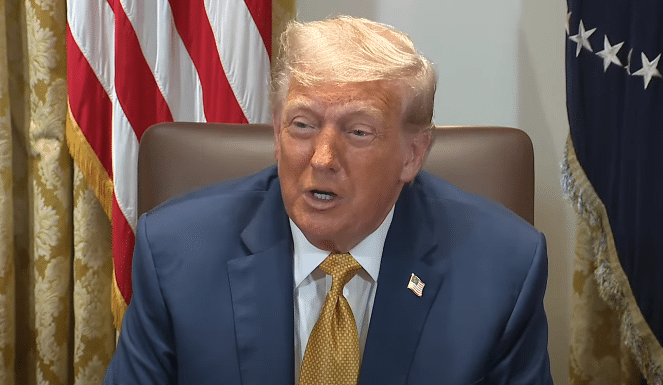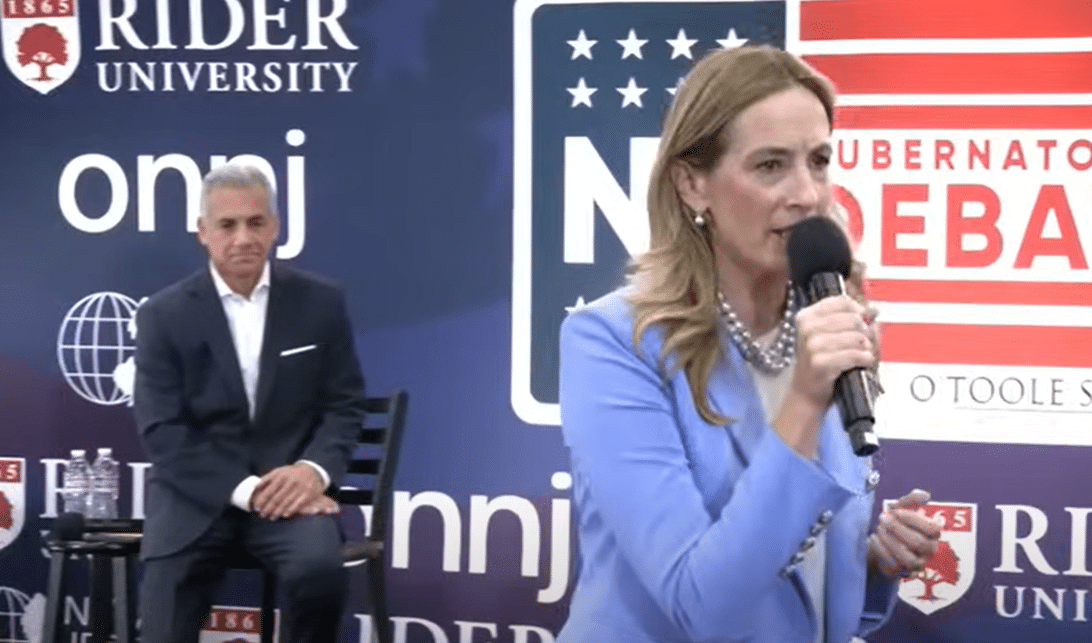
Oct. 24, 2025
Permission to republish original opeds and cartoons granted.
Lower Than Expected Inflation A Pleasant Surprise Amid Shutdown Jitters, Electricity Down 0.5 Percent
|

|
|
The Bureau of Labor Statistics finally managed to get out what could be the last inflation report for a very long time, with September inflation coming in at 0.3 percent, or 3 percent annually —a pleasant surprise — it was supposed to come out Oct. 15 before the Democrat-led government shutdown ground non-essential services to a halt, and it came in below market expectations. Of particular note, electricity — which skyrocketed during the Biden administration, surging as much 15.8 percent annually in Aug. 2022 — dropped 0.5 percent in September even as artificial intelligence data centers are increasingly coming online. That’s a nice reprieve. It’s also not entirely surprising given President Donald Trump’s commitment to unleashing American industrialization, including substantially boosting the U.S. electricity grid to keep up with surging demand. Since January, U.S. electricity generation has already increased 2.97 percent to 2.13 trillion kilowatt hours (kWh), up from 2.07 trillion kWh the first six months of 2024, according to data compiled by the U.S. Energy Information Agency. Households have been smacked over the head the past few years with crushing inflation, leading to the downfall of former President Joe Biden and former Vice President Kamala, who Trump soundly defeated in the 2024 election. Now, thanks to the President’s commitment to get the U.S. economy’s energy production back up and running as it should, prices are coming down — for now.
|
Virginia and New Jersey Governor Races Tighten and GOP Takes Lead in Attorney General Race in Virginia
|

|
|
The races for governor in Virginia and New Jersey are tightening as the Nov. 4 election approaches, as are lieutenant governor and attorney general races in Virginia according to the latest flurry of surveys. In the Virginia governor race, Democrat Rep. Abigail Spanberger sits at a seven-point-lead over GOP challenger Lt. Gov. Winsome Earle-Sears two weeks out from the election. Spanberger leads Earle-Sears 49 percent to 42 percent in the latest Virginia Commonwealth University (VCU) poll released Oct. 21. While this is a substantial lead for Spanberger, her lead has dropped nine percentage points since September, indicating just how tight the Virginia race is becoming as election day nears. While Spanberger maintains a significant — if narrowing — lead over Earle-Sears in the governor race, Virginia’s race for lieutenant governor has Democrat Sen. Ghazala Hashmi and Republican John Reid in a dead heat. Hashmi leads Reid by a single percentage point, 44 percent to 43 percent according to the VCU poll. In a swift turn of events, Republicans appear more likely to win the Virginia attorney general race than they did in September, with Republican Jason Miyares taking a three-point lead over Democrat Jay Jones after trailing Jones by six points in the September poll. Miyares now leads Jones 45 percent to 42 percent, after trailing him 41 percent to 47 percent in September according to VCU polling. In New Jersey, a state that swung ten percentage points toward President Donald Trump in 2024, the governor race is also tightening. Two recent polls show the race narrowing substantially compared to a few months ago, with the latest KAConsulting survey cited by Newsweek on Oct. 21 showing Democrat Mikie Sherrill leading Republican Jack Ciattarelli by a narrow three percentage points, 47 percent to 44 percent. A Quinnipiac University survey from Oct. 15 showed a wider lead for Sherrill, with 50 percent of voters supporting her compared to 44 percent supporting Ciattarelli. Both surveys show Sherrill’s once substantial lead has narrowed over the past four months.
|
President Trump Could Give Democrats Nov. 21 Deadline On Shutdown, Make Deal With Banks On Worker Backpay
|

|
|
Americans for Limited Government Executive Director Robert Romano: “[T]he President and the private banking sector can end government shutdowns once and for all. All the President needs to do is work his art of the deal with big banks to lend to excepted workers loans the sum of their salaries, until Congress gets its act together. The workers are legally guaranteed backpay with interest as soon as the shutdown ends, and so they’ll just repay the loans when they finally get paid. The banks could even require that they do so as a condition for the loan. Banks, which are already getting involved voluntarily to assist federal workers, can bundle the worker bridge loans as securities, which are legally guaranteed to pay and are as good as gold, to keep the program liquid. The longer the shutdown goes on, the more interest will accrue for the backpay (banks can split it with the workers or whatever), causing the speculative value of the securities to increase. It’s a win-win, causing Senate Democrats to lose leverage in the shutdown. If it works, maybe Congress never again tries to hold the economy hostage like this and the government can get back to work.”
|
Lower Than Expected Inflation A Pleasant Surprise Amid Shutdown Jitters, Electricity Down 0.5 Percent

By Robert Romano
The Bureau of Labor Statistics finally managed to get out what could be the last inflation report for a very long time, with September inflation coming in at 0.3 percent, or 3 percent annually —a pleasant surprise — it was supposed to come out Oct. 15 before the Democrat-led government shutdown ground non-essential services to a halt, and it came in below market expectations.
Of particular note, electricity — which skyrocketed during the Biden administration, surging as much 15.8 percent annually in Aug. 2022 — dropped 0.5 percent in September even as artificial intelligence data centers are increasingly coming online. That’s a nice reprieve.
It’s also not entirely surprising given President Donald Trump’s commitment to unleashing American industrialization, including substantially boosting the U.S. electricity grid to keep up with surging demand. Since January, U.S. electricity generation has already increased 2.97 percent to 2.13 trillion kilowatt hours (kWh), up from 2.07 trillion kWh the first six months of 2024, according to data compiled by the U.S. Energy Information Agency.
It’s not enough, and there’s still a long way to go to get to the President’s proposed doubling of the electricity grid. A real long way. Especially as the hardware for the data centers keeps drawing on the grid.
Electricity is one of those things where no matter how fast the President would like to move, the power industry can’t ramp up fast enough from the perspective of U.S. consumers.
Households have been smacked over the head the past few years with crushing inflation, leading to the downfall of former President Joe Biden and former Vice President Kamala, who Trump soundly defeated in the 2024 election.
Now, thanks to the President’s commitment to get the U.S. economy’s energy production back up and running as it should, prices are coming down — for now.
But to get where Congress needs to, the President might need to go big. The One Big Beautiful Bill Act offered numerous incentives for power plants to get up and running but there’s also an open question for how quickly Congress wants put more electricity into the market with new power plants. Are they willing to spend money on it in next year’s budget, for example?
The President faces similar questions about beef, which has increased about 12.7 percent in the past year. The President knows he can get prices down quick by flooding markets with Argentinian beef. It would also cause domestic production to pick up to get the same return on investment as the cow population increases. Once the U.S. has restored production to previous levels then we it can be easier to ratchet up the tariffs again. For now, the President is putting pressure on cattlemen to lower prices.
But as with all prices, it is simple supply and demand: Flood the market and prices collapse. It worked with eggs. And it will work with electricity and beef, as it already has for oil, with Americans getting much needed relief long term on gasoline prices, down 0.5 percent from a year ago.
It's the only way to stop inflation long term, dramatically expand production across the board, especially following the post-Covid money print-a-thon by Congress and the Federal Reserve — the M2 money supply expanded by $6.2 trillion — plus production collapsed to almost nothing for several months during the lockdowns, leading to the inflation spike.
Which was politically lethal. Just ask Gerald Ford, Jimmy Carter, George H.W. Bush and Joe Biden, all one-term presidents who saw inflation increase faster than incomes for prolonged periods. As the President and Republicans look ahead to 2026 and 2028, the one thing that might matter more than most is boosting production one way or another — and keep prices down.
In the meantime, the White House is warning this could be the last inflation report — or any other kind of report on economic data — while Congress works out the shutdown.
Meaning, policymakers here and around the world are missing key indicators that are essential to setting interest rates and conducting foreign exchange, nothing to be toyed with. If nothing else, we have an obligation to our trade partners to tell them what is going on with the economy or else they might start hiding data, too. Right now everyone’s guessing. The President could start to articulate strong economic consequences that may unfold the longer Democrats’ desperate gambit to hold the economy hostage because they lost the election goes on. Anything could happen. As usual, stay tuned.
Robert Romano is the Executive Director at Americans for Limited Government.
To view online: https://dailytorch.com/2025/10/lower-than-expected-inflation-a-pleasant-surprise-amid-shutdown-jitters-electricity-down-0-5-percent/
Virginia and New Jersey Governor Races Tighten and GOP Takes Lead in Attorney General Race in Virginia

By Manzanita Miller
The races for governor in Virginia and New Jersey are tightening as the Nov. 4 election approaches, as are lieutenant governor and attorney general races in Virginia according to the latest flurry of surveys.
In the Virginia governor race, Democrat Rep. Abigail Spanberger sits at a seven-point-lead over GOP challenger Lt. Gov. Winsome Earle-Sears two weeks out from the election. Spanberger leads Earle-Sears 49 percent to 42 percent in the latest Virginia Commonwealth University (VCU) poll released Oct. 21. While this is a substantial lead for Spanberger, her lead has dropped nine percentage points since September, indicating just how tight the Virginia race is becoming as election day nears.
While Spanberger maintains a significant — if narrowing — lead over Earle-Sears in the governor race, Virginia’s race for lieutenant governor has Democrat Sen. Ghazala Hashmi and Republican John Reid in a dead heat. Hashmi leads Reid by a single percentage point, 44 percent to 43 percent according to the VCU poll.
In a swift turn of events, Republicans appear more likely to win the Virginia attorney general race than they did in September, with Republican Jason Miyares taking a three-point lead over Democrat Jay Jones after trailing Jones by six points in the September poll. Miyares now leads Jones 45 percent to 42 percent, after trailing him 41 percent to 47 percent in September according to VCU polling.
Jay Jones has been heavily criticized after text messages surfaced from 2022, in which the Democratic nominee for attorney general told a Republican lawmaker Delegate Carrie Coyner over text message he wished there would be “two bullets” in the head of the Republican leader of the House of Delegates, Todd Gilbert. It is after those text messages surfaced in early October that Jones’ support appears to have declined substantially. Whether the violent, politically charged texts from the Democratic nominee end up costing him the attorney general position remain to be seen, but Virginians are understandably wary of placing more power into the hands of a man who uses vile and violent rhetoric about his political opponents.
In New Jersey, a state that swung ten percentage points toward President Donald Trump in 2024, the governor race is also tightening. Two recent polls show the race narrowing substantially compared to a few months ago, with the latest KAConsulting survey cited by Newsweek on Oct. 21 showing Democrat Mikie Sherrill leading Republican Jack Ciattarelli by a narrow three percentage points, 47 percent to 44 percent.
A Quinnipiac University survey from Oct. 15 showed a wider lead for Sherrill, with 50 percent of voters supporting her compared to 44 percent supporting Ciattarelli.
Both surveys show Sherrill’s once substantial lead has narrowed over the past four months. A Jul. 29 Fairleigh Dickinson University poll found Sherrill leading Ciattarelli by eight points, 45 percent to 37 percent, with 16 percent undecided. Ciattarelli has made substantial ground against Sherrill since early July, when he trailed her by twenty points in a Jul. 2 Rutgers-Eagleton poll.
New Jersey is undergoing a power rebalancing, with voters showing signs of embracing more conservative approaches to issues like taxes and affordability as well as President Donald Trump’s America First priorities. In 2024, New Jersey swung ten percentage points toward President Trump, with Trump losing the state to Harris by just six percentage points after ceding it to Biden by sixteen points in 2020. The narrow lead Democrat Mikie Sherrill holds over Jack Ciattarelli indicate a significant opportunity for conservatives among New Jersey swing voters and moderates.
The New Jersey governor race and the Virginia governor race, lieutenant governor race, and attorney general race, are all narrowing, perhaps an early indicator of a contentious midterm election cycle in 2026. What the current races in Virginia and New Jersey do not indicate, is a slam-dunk for the Democratic Party’s agenda despite widespread Democratic protest against President Donald Trump’s America First priorities, including shutting down the federal government for over three weeks and counting. If anything, Democrats are continuing to face challenges drumming up voter enthusiasm, and their own alarming sense of righteous political violence and willingness to shutter the federal government until they get their way are further isolating them from moderate and swing voters.
Manzanita Miller is the senior political analyst at Americans for Limited Government Foundation.
To view online: https://dailytorch.com/2025/10/virginia-and-new-jersey-governor-races-tighten-and-gop-takes-lead-in-attorney-general-race-in-virginia/

President Could Give Democrats Nov. 21 Deadline On Shutdown, Make Deal With Banks On Worker Backpay
Oct. 25, 2025, Fairfax, Va.—Americans for Limited Government Executive Director Robert Romano today issued the following statement urging the Senate Democrats to end their government shutdown:
“Democrats think they can keep the government shutdown indefinitely until they get what they want on expanded Obamacare tax credits and ending prohibitions on illegal aliens accessing public health care, choosing not to cooperate with President Trump and Congressional Republicans. What they haven’t considered is that President Trump and Republicans can do the same thing, and choose not to cooperate with the opposition party as Congress grinds to a halt on appropriations for the foreseeable future.
“The President could offer a Nov. 21 deadline to Democrats to reopen the government and sit down to talk — that’s when the House passed continuing resolution would expire if it ever passes. After that, they don’t get shit. Nobody does. The President and Congress could just opt to shut down the government for a year or more and see how the government operates without Congress being involved. Run the government without any discretionary appropriations whatsoever and just run the mandatory spending programs after the President conducts a thorough review of the federal law of what Congress has required must run even in the absence of discretionary appropriations, reprogramming revenues and funds on an emergency basis to keep things afloat.
“In the meantime, the President and the private banking sector can end government shutdowns once and for all. All the President needs to do is work his art of the deal with big banks to lend to excepted workers loans the sum of their salaries, until Congress gets its act together. The workers are legally guaranteed backpay with interest as soon as the shutdown ends, and so they’ll just repay the loans when they finally get paid. The banks could even require that they do so as a condition for the loan. Banks, which are already getting involved voluntarily to assist federal workers, can bundle the worker bridge loans as securities, which are legally guaranteed to pay and are as good as gold, to keep the program liquid. The longer the shutdown goes on, the more interest will accrue for the backpay (banks can split it with the workers or whatever), causing the speculative value of the securities to increase. It’s a win-win, causing Senate Democrats to lose leverage in the shutdown. If it works, maybe Congress never again tries to hold the economy hostage like this and the government can get back to work.”
To view online: https://getliberty.org/2025/10/president-trump-could-give-democrats-nov-21-deadline-on-shutdown-make-deal-with-banks-on-worker-backpay/
